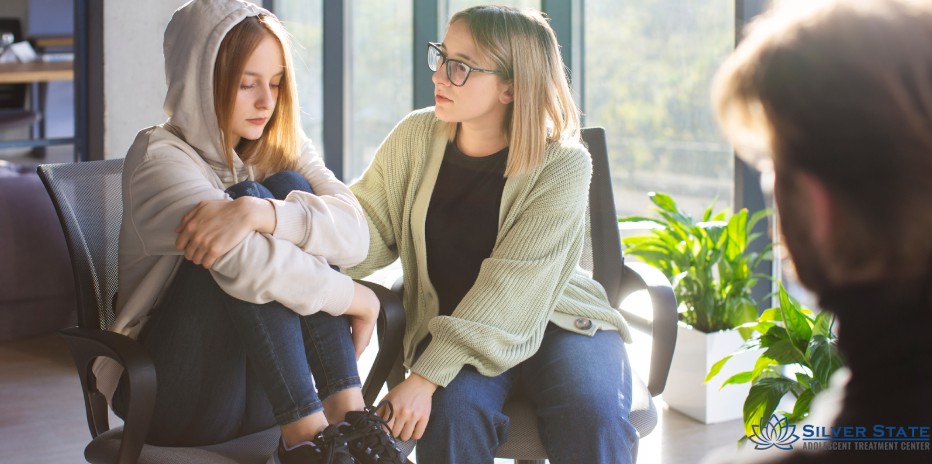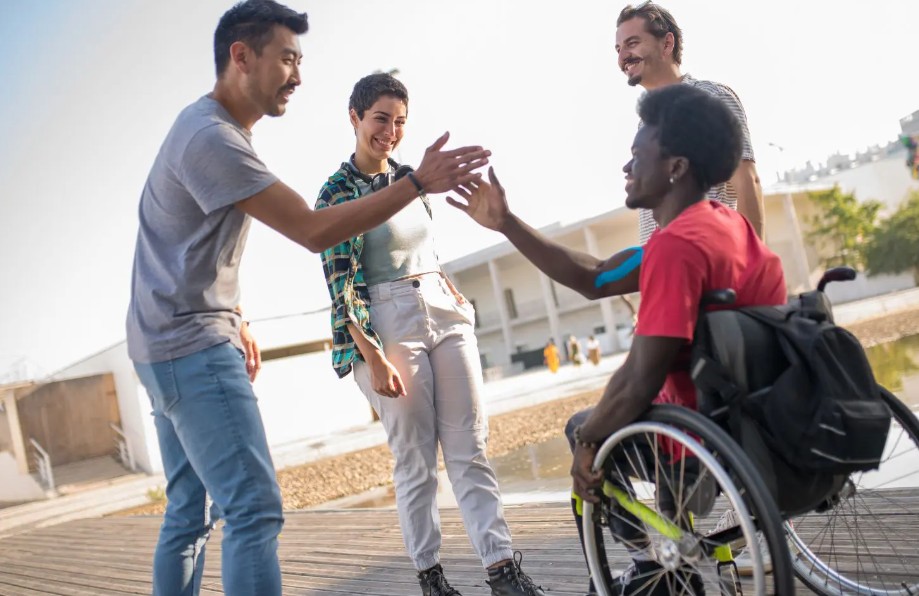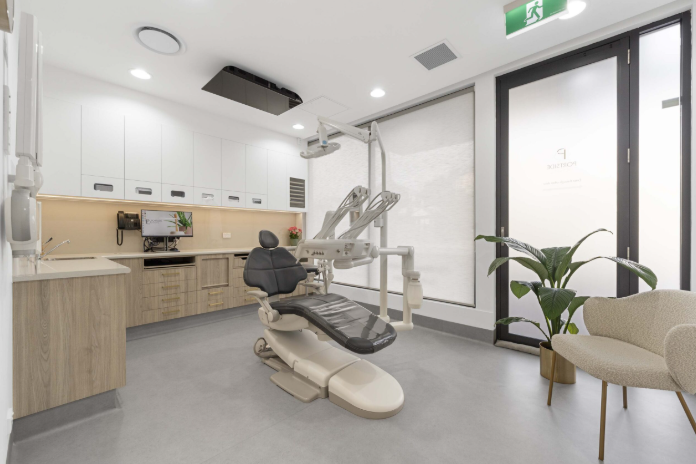Telemedicine isn’t supposed to take place in person. But that’s the conundrum that one addiction treatment startup confronted this month, as states end flexible telehealth rules put in place during the pandemic.
“We called it the Alabama Airdrop,” said Brian Clear, medical director of Bicycle Health, a California-based opioid use disorder clinic with 500 patients in Alabama. On July 11, a new state law tightening remote prescription rules meant those patients had to see a doctor in person to keep getting treatment.
Hear more from Dan Vergano about this story:
Bicycle tried to find local doctors to see the patients, said Clear, but could only link up 100 of them, a reflection of a nationwide shortage of drug-use disorder treatment. The company kicked Plan B into gear, flying two providers and a clinical support specialist to Birmingham, Alabama, for a week. “And that was all they did for six days, eight hours a day for six days,” he said. “A physical examination for almost 300 patients.” That still left 100 patients who couldn’t make it to Birmingham without treatment. “That is not a standard of care. It’s completely arbitrary,” said Clear.
The dilemma those patients, and Bicycle, face is a possible outcome of the changing landscape for telemedicine as the covid pandemic grinds on. A federal public health emergency in March of 2020 unleashed telemedicine to treat addiction — an unforeseen and now widely applauded nationwide experiment in easing prescribing — that faces a looming patchwork of new state and federal rules that might make it the new normal in medicine or might return things to its pre-pandemic impossibility.
Suddenly stopping buprenorphine leads to a high rate of relapse and at least a 5 percent risk of a person overdosing on opioids in the next six months, regardless of how long they had been on the medication. That’s especially dangerous with illicit fentanyl, a drug 30 to 50 times more potent than heroin, now flooding the illegal drug market.
“This is not the time, if there’s ever a time to decrease the ability of people to get access to treatment for opioid use disorder,” said Dr. Stephen Taylor of the American Society of Addiction Medicine. “We have an exploding number of people with this disorder and in need of treatment. And we have a shortage of treatment providers.”
Pandemic prescribing
At the center of the telemedicine shift is the drug buprenorphine, a mild prescription opioid used to treat opioid use disorder. The condition — defined as a chronic, impairing, overuse of opioids — affects about 2.1 million people nationwide. (Overdoses of illicit opioids like fentanyl, heroin and painkillers killed more than 90,000 people in the U.S. last year, according to estimates from the Centers for Disease Control and Prevention.) That makes buprenorphine, which prior to the pandemic had to be prescribed in person, critical to stopping the country’s overdose crisis. Along with methadone, it is the most successful treatment for the disorder, where about half of the people who start with this “substitution” medication don’t take other drugs after a year.
On March 31, 2020, the Drug Enforcement Administration — which uniquely oversees buprenorphine prescribing under narcotics laws — allowed doctors registered with an opioid treatment program to start prescribing buprenorphine with just a phone call examination of a patient, due to the demands of the covid pandemic and the declaration of a federal public health emergency. The change affected about 5 percent of all U.S. physicians. Limits on how many patients a fully accredited doctor could treat were likewise loosened, from 100 to 275, by the federal Substance Abuse and Mental Health Services Administration.
Telehealth treatment for opioid use disorder boomed, flowing into the $42 billion addiction recovery industry. The pandemic suddenly made possible changes in prescribing law that addiction specialists had been advocating for decades. Bicycle went from one clinic in 2017 to serving 17,000 patients in 26 states, like numerous others raising startup funds to power its expansion. “We’ve hired over 50 addiction medicine providers,” said Ankit Gupta, Bicycle’s chief executive officer.
“These are specialist addiction medicine providers. They’re going to be doing a better job treating patients with addictive disorders than local providers, who don’t have that same level of specialty, training and experience,” Gupta said. “And clearly weren’t giving them the treatment before.”
Addiction treatment specialists are in short supply nationwide, especially away from large cities and in rural areas, but also to treat the unhoused, said Corey Davis, a public health lawyer at the nonprofit Network for Public Health Law. Part of the appeal of telehealth is the chance it offers to reach those people, he noted.
Before the pandemic, only about 1 in 10 people who wanted treatment for opioid use disorder received buprenorphine or methadone. A growing body of evidence emerging from the pandemic supports the idea that telemedicine treatment for opioid use disorder can help change those numbers, said Sarah Wattenberg, director of quality and addiction services at the National Association for Behavioral Healthcare. Nearly half of all telemedicine check-ins are now for mental health reasons, including substance use disorders, she said.
“I definitely think it was a silver lining in the pandemic,” said Wattenberg, “We have just in explosion now of people using telehealth services. I think the long-term gain of that will be less stigma. The more people engage, the more they understand it, the less they stigmatize.”
On Thursday, the American Journal of Psychiatry released a first nationwide study looking at how telemedicine affected patients with opioid addictions among more than 138,000 patients in the Veterans Health Administration, the country’s largest addiction treatment system, starting in March 2019 and running through February of 2021. Overall, monthly counts of patients receiving buprenorphine increased by about 14 percent among the patients with opioid addictions. By February 2021, 83 percent were receiving telehealth for a buprenorphine visit, with the majority of those by phone rather than video.
“We found that these policy changes were actually associated with ongoing increases with treatment, which is a really good sign,” said study lead author Lewei (Allison) Lin, an addiction psychiatrist at the University of Michigan and research scientist at the VA Ann Arbor Healthcare System.
The buprenorphine increase came despite an overall 6 percent drop in the overall number of patients in the VA system receiving any kind of substance use disorder treatment during the pandemic. The study did not find as many new patients signing up for buprenorphine with telemedicine, however, suggesting it is more a tool for keeping people in treatment rather than starting it. (In a February BMJ Innovations study, Bicycle reported its patient dropout rate was only 9.5 percent over three months of treatment, compared with a 23 percent industry average.)
“I think we just need more options for people, meaning telehealth as it currently looks might not necessarily result in a lot more people getting into care, because guess what? There’s a lot of other hurdles,” said Lin, including homelessness and mental health issues. “It’s probably a lot easier for patients to get treatment for their diabetes than it is for their addiction right now. And so, we have to change the way that we think about addiction care. Telehealth may be a component of that, but it has to be broader.”
Patchwork future
The Biden administration has pledged to retain the eased rules for telemedicine, notably supported by National Institute on Drug Abuse Director Nora Volkow, who last month told Politico their removal would worsen the overdose crisis. However, medical licensing and prescribing authority also rests with states, not just federal rules, making state laws matter just as much, as the Alabama law shows.
And for now, the addiction treatment telehealth boom rests on the pandemic, and its federal public health emergency declaration, recently renewed until Oct. 14. The big worry is treatment and coverage rules suddenly snapping back to their earlier state, where before the pandemic only 35 states required insurers to pay for telehealth visits and only three required payment for telephone visits. The federally eased pandemic rules are officially set to end nationwide 151 days after that declaration ends.
Another roadblock might come from pharmacies, said Gupta. Some national chains refuse to fill telemedicine prescriptions for buprenorphine, especially in light of blowback from May news of telehealth startups overprescribing stimulants that treat ADHD, which triggered a DEA investigation. Bicycle had to develop its own pharmacy finder tool for patients to find pharmacies to honor their refills even before that happened.
And as the airlift also demonstrated, not every state is amenable to expanded telehealth for addiction treatment. Kentucky’s medical board has issued a statement saying remote opioid use disorder treatment in not appropriate, for example, holding to pre-pandemic standards. Only 39 states are members of a Federation of State Medical Boards compact that allows out-of-state licensed doctors to prescribe, and only 20 states have permanent or long-term interstate telemedicine laws. (It is not all bad news for telemedicine: Florida eased its telemedicine restrictions for prescribing controlled substances in April.)
In Kentucky’s case, the concerns of telemedicine addiction treatment are that it will allow easier cheating on urine tests by patients to check if they are taking other drugs, compared with an in-person test. Bicycle tries to get around this worry by requiring random at-home tests with 24 hours for complying. “Before a random drug screen, you basically have to keep your friend’s clean urine in the refrigerator and then be able to warm it up to body temp on the fly in time and in a way to not be obvious on the test,” said Bicycle’s Clear.
“Yeah, smart people can do that,” Clear said. “But most patients who are experiencing active addiction and not doing well in treatment aren’t going to be able to.” With most in-person drug tests, people know what day the test is coming — the day of their doctor visit — and only need to abstain from other drugs a few days ahead of that time, he argued, making it a less reliable screen.
In Alabama, the concern leading to its telehealth law has been an unregulated telehealth industry spurring a return to the “pill mill” era of painkiller prescribing that spurred the opioid crisis two decades ago. “The last thing we want to do with telemedicine is create more people with opioid addiction,” Republican State Sen. Dan Roberts told Alabama.com, saying that an in-person physician is more accountable to their patients than an out-of-state one prescribing over the telephone.
But that still leaves the 100 Bicycle patients who can’t find a local doctor in Alabama dealing with an untreated substance use disorder, said Gupta, the very problem that has created the overdose crisis.
“We’re getting caught in this blanket of legislation designed to stop exactly the kind of practices that we exist to stop and correct, the irresponsible prescribing of addictive substances,” said Gupta. “We are without exaggeration the solution to this problem, and we’re being we’re being caught in legislation designed to be a less effective solution.”
Thanks to Lillian Barkley for copy editing this article.






